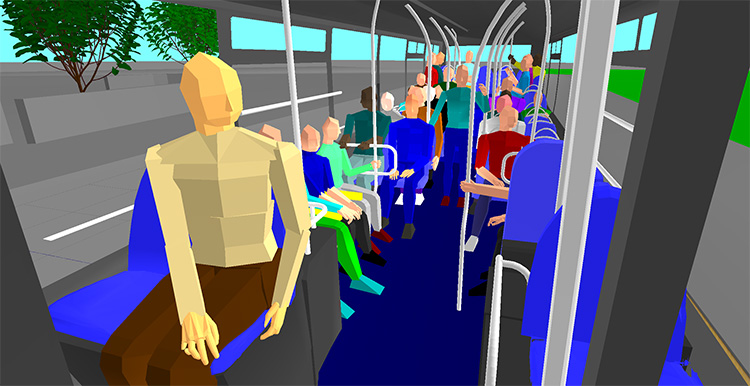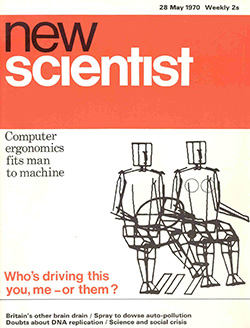Posture
Typical postures can be predicted and quantified using the SAMMIE system. It is essential to ensure that appropriate postures are actively encouraged by good design. The human model is displayed as a core set of 18 joints and 21 straight rigid links structured hierarchically to represent the major joints and body segments. Predicted postures can be quantified, using joint constraints, in terms of flexion/extension abduction/adduction and lateral/medial rotation at these joints. Joints are constrained by default using data from Barter, Emmanuel, and Truett; as reported in Dempster (1955). These constraints prevent joints being moved beyond normal limits. Poor postures can be identified by comparison with published or in-house recommendations for the particular tasks under investigation.

A range of postures recreated to populate a bus in order to simulate the effects of passengers on accessibility.
The predicted posture is clearly a function of the human model's fit, reach and vision and a poor posture will usually require modification to the size of the workstation or the layout of controls and displays. The preferred, proactive approach is to first position a variety of different sized human models in ideal postures and then secondly to construct the workstation around them to ensure optimum fit, reach and vision providing adjustable features where necessary. The appropriateness of any posture requires judgement by the software user and it is recommended that observations are made of representative postures to support SAMMIE assessments.
Creation of postures for a range of humans, across a range of tasks can take time. SAMMIE provides a set of standardised default postures and the means to save a reload user postures. After a very short time most SAMMIE users have developed an extensive library of postures that simplify the posturing process as it is often quicker to adjust an existing similar posture to that required than start form a default standing or seated posture.






